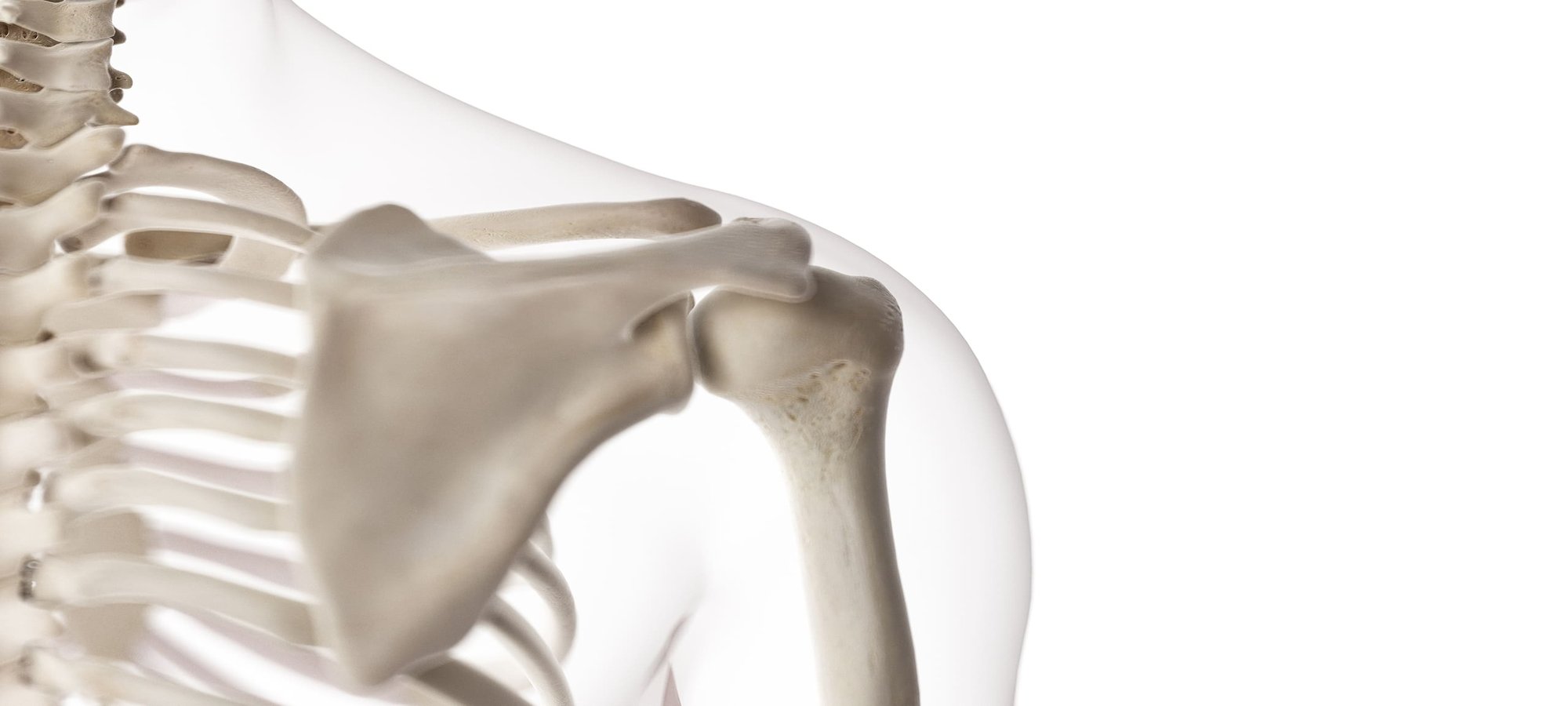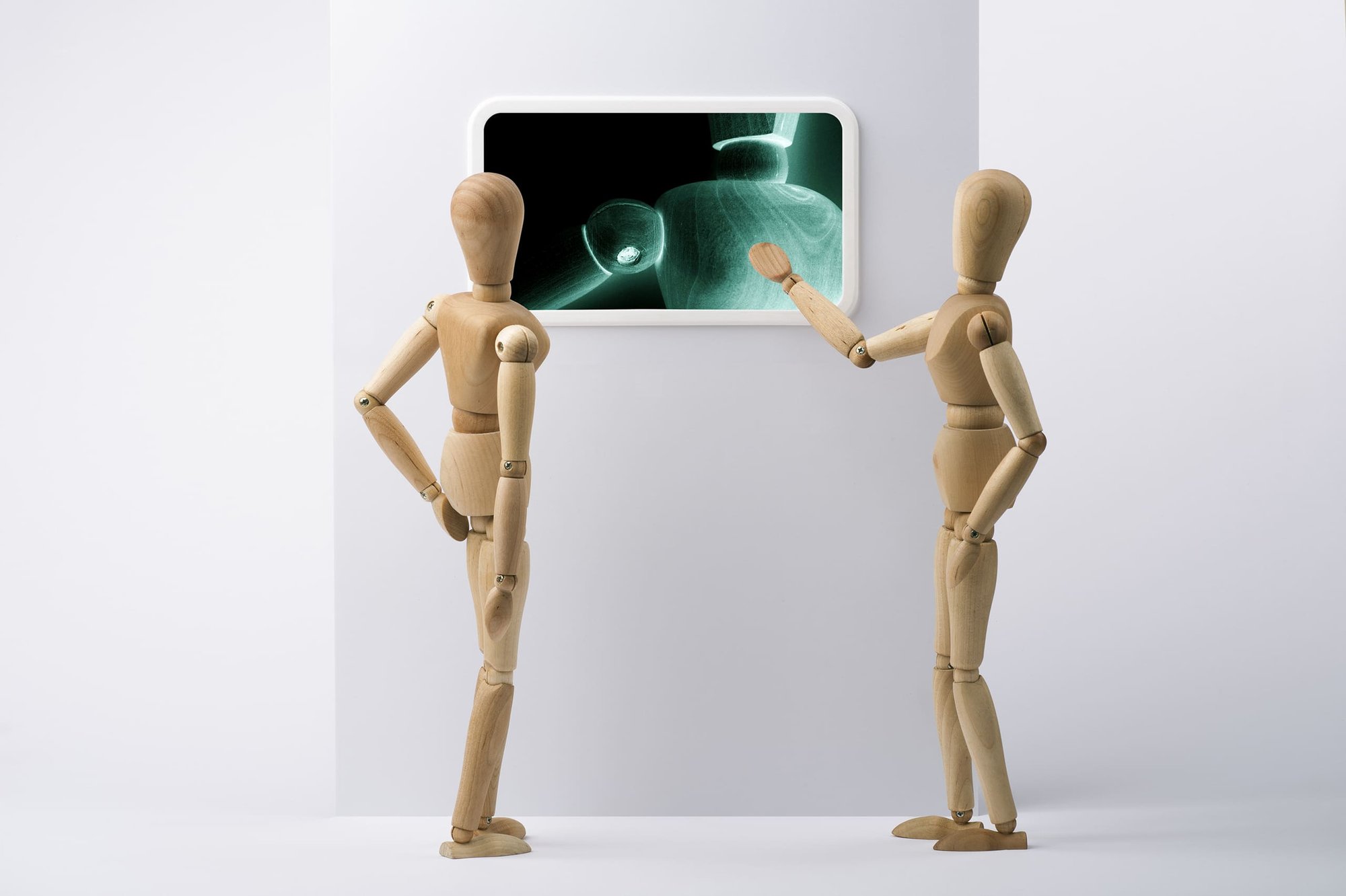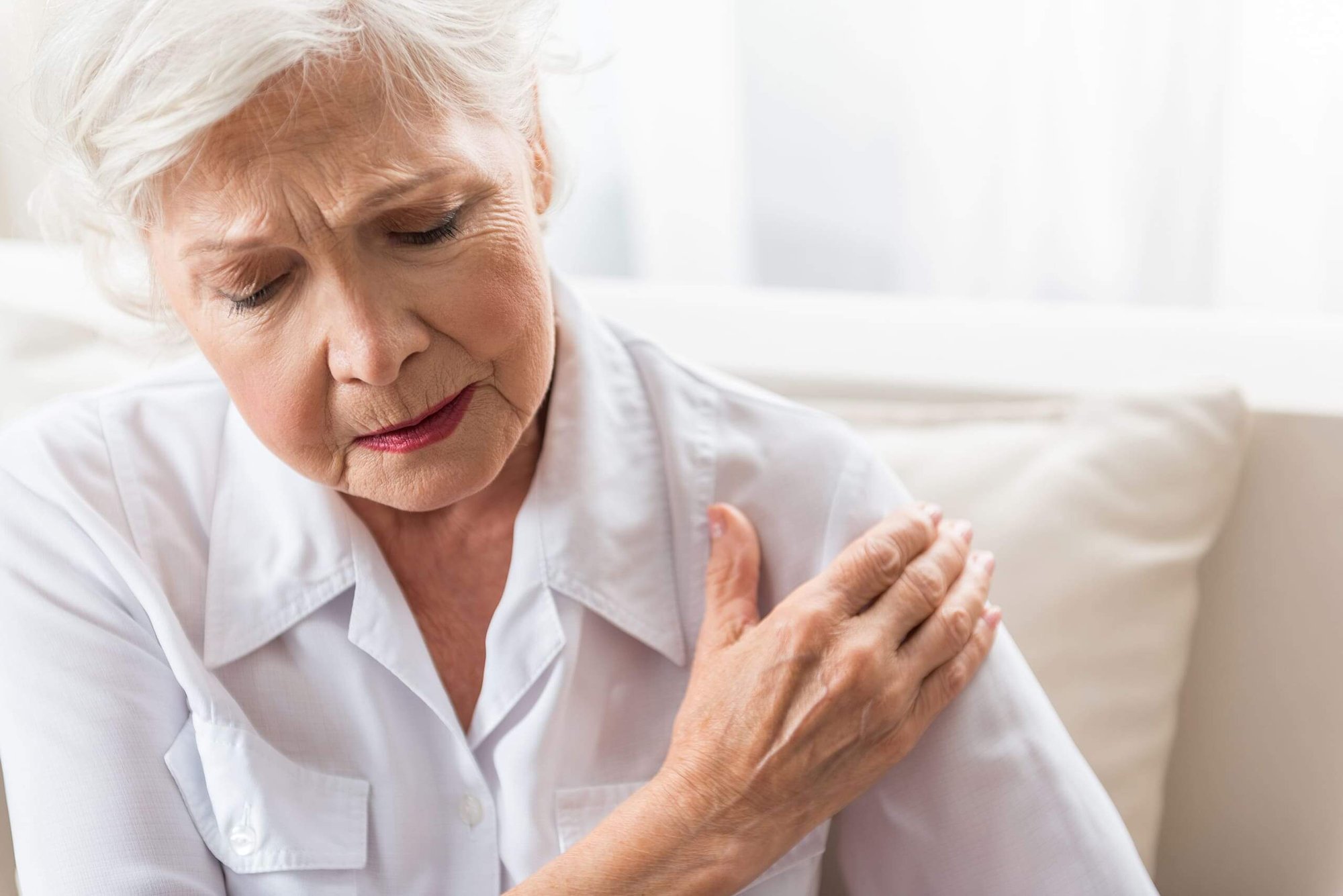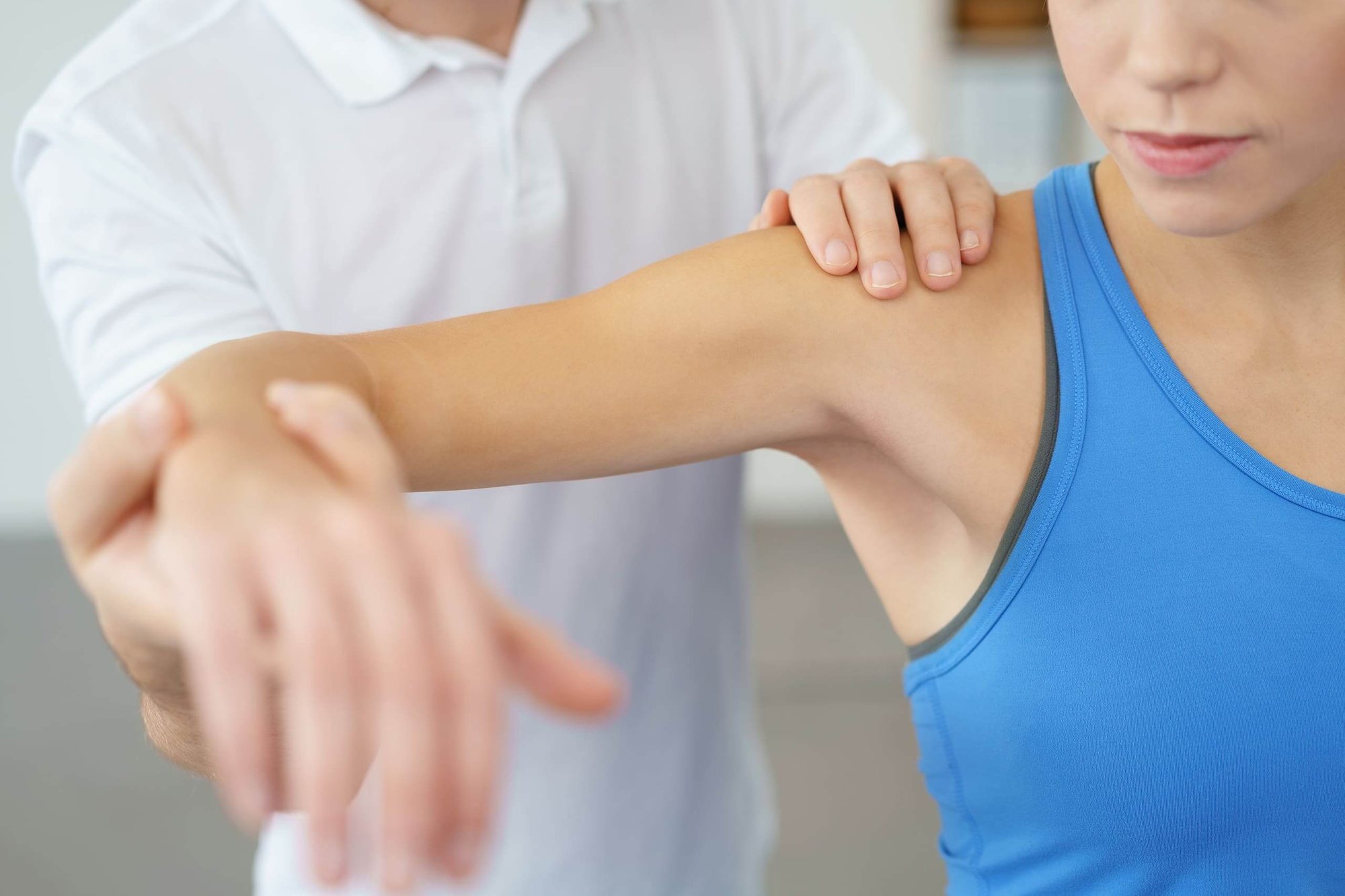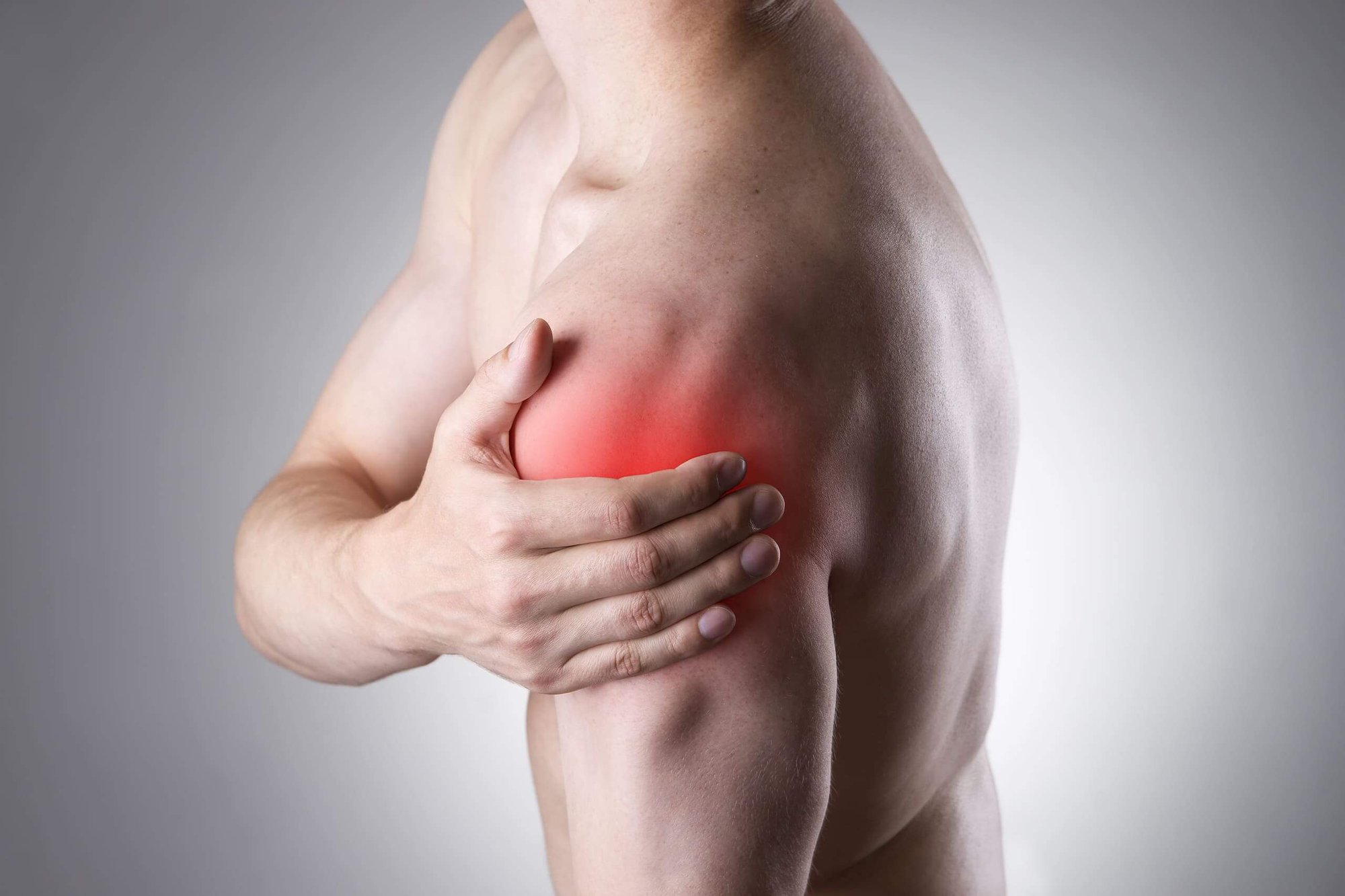Impingement Syndrome
Is characterized by narrowing of the subacromial space caused by a variety of pathologies including bursitis, bony spurs, and degeneration of the rotator cuff. As a consequence, abduction of the arm in the shoulder joint may be painfully impaired.
Treatment is initially conservative. In patients not responding sufficiently to exercise, anti-inflammatory drugs, or steroid injections, arthroscopic resection of the bursa, and subacromial decompression can be considered.
Tendinosis Calcarea
In this condition, calcium salts deposited in the tendons of the rotator cuff are causing chronic inflammation, with shoulder pain predominantly at night. Conservative treatment options include extracorporal shock wave therapy and steroid injections, while arthroscopic removal of the crystal deposits is only occasionally required.
Pathologies of the Long Biceps Tendon
Transmitting about 15 percent of the biceps muscle's force, the long biceps tendon (LBT) originates at the upper glenoid rim. A SLAP-lesion is characterized by a detachment of the tendon´s anchor from this point. This condition can be of degenerative or traumatic origin.
Degenerative changes may also lead to partial or complete tears of the tendon, often accompanied by additional pathologies within the shoulder joint. If conservative treatment is unsuccessful, therapeutic options include fixation of the LBT in the bicipital groove of the humerus. In elderly patients, good results are achieved by simply severing the tendon.
Rotator Cuff Tears
The rotator cuff represents a group of four interconnected tendons inserting at the humeral head, the corresponding muscles of which originate from the scapula. These muscles are largely responsible for abduction and rotation of the arm in the shoulder joint. Degenerative changes may lead to tears in the rotator cuff tendons which become increasingly prevalent with advancing age. Only occasionally, such tears are also found in younger patients, where they can sometimes occur as a consequence of traumatic dislocation of the shoulder.
Symptomatic defects of the rotator cuff in younger patients usually require arthroscopic reconstruction, while conservative therapy can be attempted in older patients depending on the size of the tear.
Shoulder Instability
Due to anatomically relatively unstable conditions, the human shoulder joint can be prone to dislocation. Shoulder instability may be uni- or multidirectional in nature. It can be caused either by congenitally weak soft tissues with poor joint alignment, or by traumatic dislocation.Shoulder dislocation is frequently accompanied by damage to the stabilizing ligaments and the labrum glenoidale, sometimes by fractures to the glenoid rim. Recurrent dislocations may ensue if these pathologies are not addressed sufficiently.
Therapy varies greatly depending on age, dislocation frequency, and underlying pathology. The majority of patients with recurrent shoulder dislocations eventually require surgery. Reconstruction of the labrum and joint capsule is usually performed in a minimally invasive manner.
Pathologies of the Acromioclavicular Joint
Comprising the junction between the acromion and the clavicle, this joint can exhibit arthritic changes of traumatic or degenerative origin. As a consequence, bony exophytes may damage the adjacent tendons of the rotator cuff. Abduction of the arm may also be painfully impaired. Conservative attempts at treatment include physiotherapy, anti-inflammatory drugs, and steroid injections. In cases not responding sufficiently, arthroscopic trimming of the lateral clavicular end, and removal of osteophytes is indicated.
Instability of the acromioclavicular joint, sometimes seen after biking or skiing accidents, is addressed by reconstructive surgery or conservative treatment, depending on the circumstances.
Frozen Shoulder
In this condition, progressive inflammatory shrinking of the joint capsule can lead to a painfully restricted shoulder function. Primary and secondary forms of this disorder can be identified, most often in middle aged women. The natural course of the disease can last for more than a year, and differs markedly between patients. While conservative treatment with physiotherapy and exercise is usually sufficient, arthroscopic capsular release may be performed in selected cases.
Osteoarthritis of the Shoulder Joint
Is characterized by gradual loss of articular cartilage, leading to pain and loss of function. While these changes are mostly degenerative in nature, underlying causes may occasionally also include fractures, or rheumatic diseases.
Conservative options include pain medication, physiotherapy, and hyaluronate injections. If these measures fail, joint replacement should be considered. Partial, total, and inverse implants are available, the choice depending on the state of the glenoid, humerus, and surrounding soft tissues.
